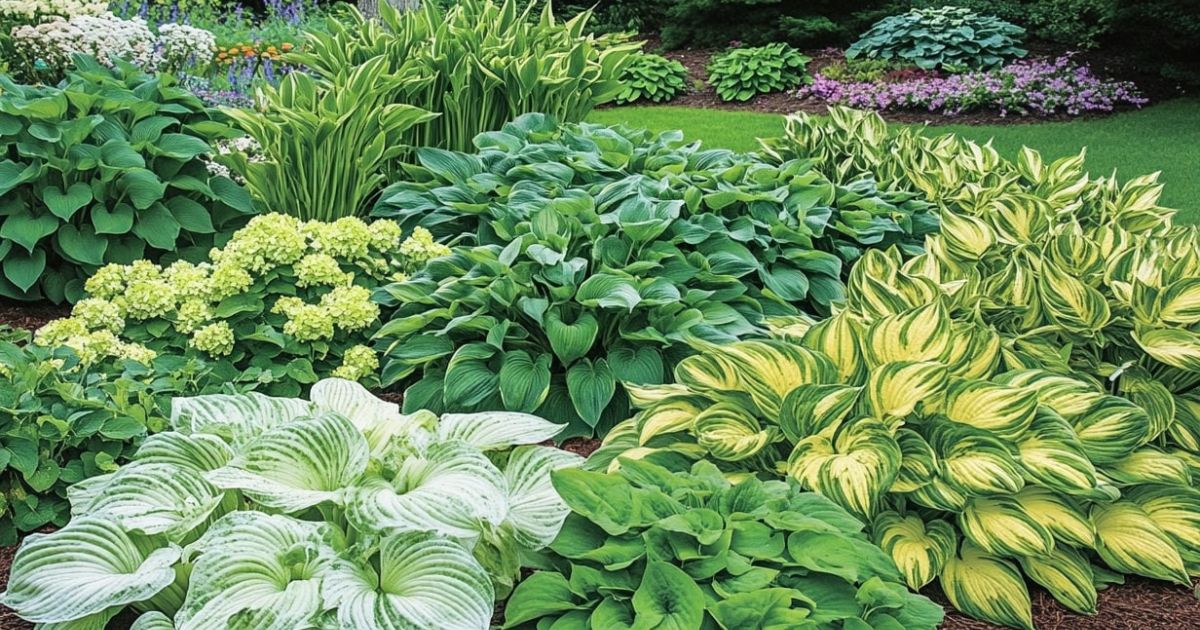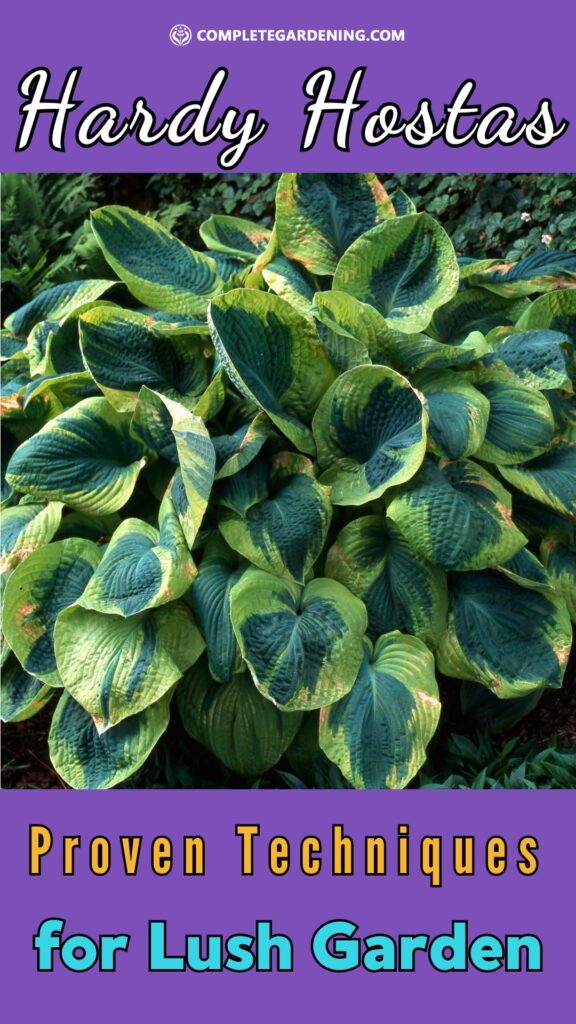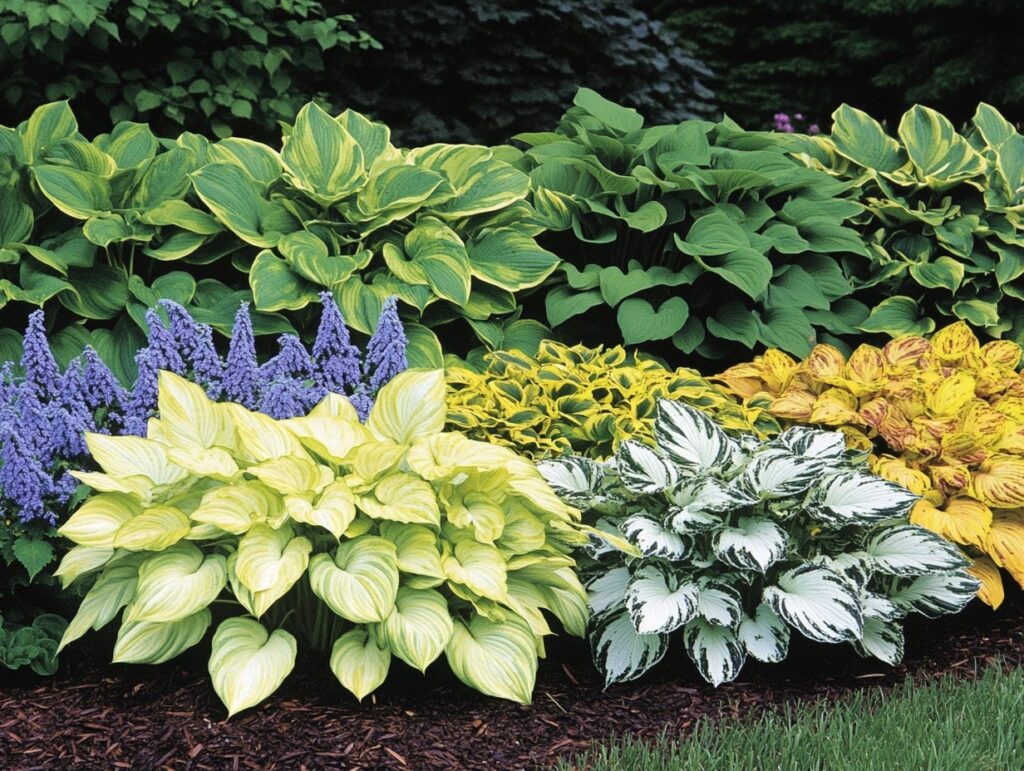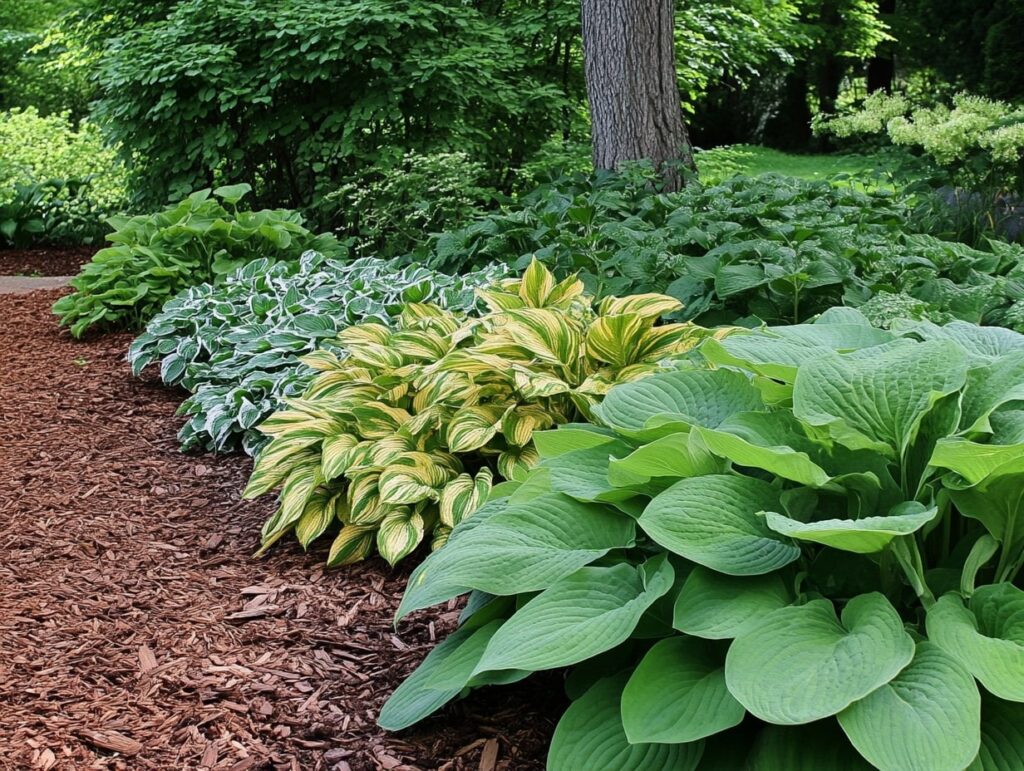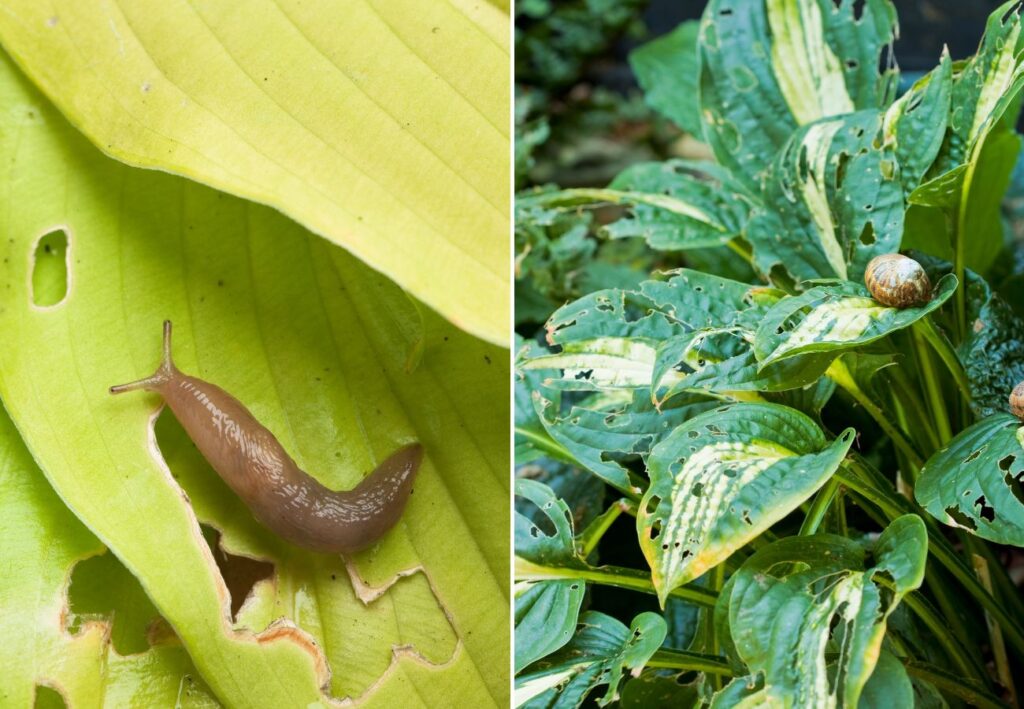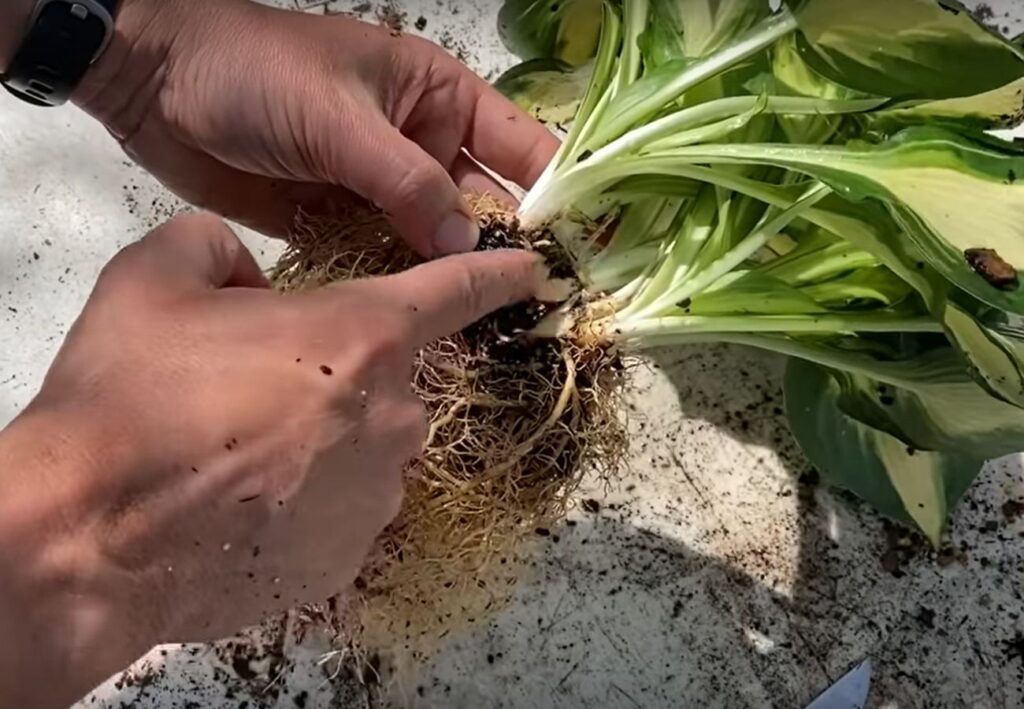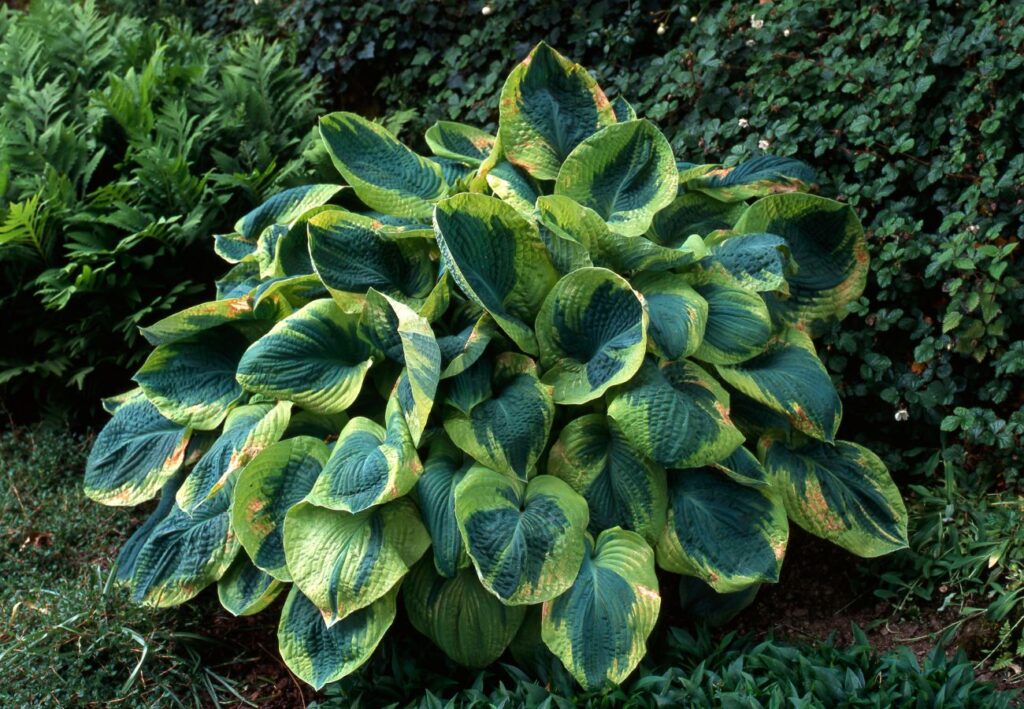Are you dreaming of a garden that’s both stunning and low-maintenance? Look no further than hostas! These amazing plants bring a burst of greenery to any space with their lush, vibrant foliage.
But here’s the kicker—they thrive in those shady, hard-to-grow spots where other plants wither away.
Imagine your garden brimming with hostas in every imaginable size, color, and texture. Picture deep blue-green leaves mingling with bright, variegated patterns, creating a living tapestry that delights the senses.
Whether you’re a gardening newbie or a seasoned pro, there’s a hosta that’s perfect for you.
Best of all, caring for hostas is a breeze. With just a bit of watering and the occasional feed, these resilient beauties will flourish, adding effortless charm to your garden.
Plus, with some simple tricks to fend off slugs and ensure they get enough shade, you’ll be rewarded with lush, robust growth year after year.
Get ready to transform your garden into a haven of greenery with the magic of hostas!
Selecting the Right Varieties
When selecting the right hosta varieties, consider both climate adaptability and the wide range of colors and patterns available. This approach ensures you choose plants that will thrive in your garden while adding visual appeal.
Considering Climate Adaptability
Climate adaptability is crucial for healthier, more resilient hostas. Different regions have varying temperatures, humidity levels, and rainfall patterns.
Cold-hardy varieties: If you live in a region with harsh winters, choose varieties like Halcyon or June. These types are more resistant to frost.
Heat-tolerant options: In warmer areas, look for hostas like Sum and Substance that can tolerate higher temperatures.
Understanding the USDA hardiness zone of your region helps significantly in making informed decisions.
Pro-tip: Using mulch can help regulate soil temperature and moisture, further supporting plant health.
Exploring Color and Pattern Varieties
Hostas are celebrated for their diverse colors and striking patterns. This aspect can greatly enhance your garden’s aesthetic.
Colors: Common options include greens, blues, and golds. Blue hostas, like Blue Angel, offer a cool tone, while gold varieties like Guacamole add warmth.
Patterns: Variegated hostas provide unique visual interest. Types like Patriot feature white margins, whereas Frances Williams showcases intricate blue-green foliage with golden edges.
Selecting a mix based on color and pattern can create a harmonious yet vibrant garden space.
Pro-tip: Grouping differently colored hostas together can create stunning contrasts and focal points.
Planting Your Hostas
Choosing the right spot for your hostas and preparing the soil properly are crucial for their growth. Ensure they have good drainage and the proper nutrients for a healthy start.
Choosing the Ideal Location
Hostas thrive in shady areas but can tolerate some sun. Look for areas in your garden that receive morning sunlight but are shaded in the afternoon. Avoid spots with intense, all-day sunlight.
When planting near trees, ensure the hostas have enough root space. Trees with shallow roots can compete for nutrients and water. Hostas prefer a humid environment but should be kept away from waterlogged areas.
Selecting a location with good air circulation helps prevent fungal diseases. Hostas also benefit from protection against strong winds. Windbreaks like fencing or shrubbery can be useful.
Soil Preparation and Planting Guidelines
The soil should be fertile, well-drained, and rich in organic matter. Aim for a pH level between 6.0 and 7.5. Add compost or aged manure to improve soil fertility and structure.
Dig a hole twice as wide and just as deep as the root ball. Place the hosta in the hole with roots spread out. Cover with soil, ensuring the crown is level with the ground. Water thoroughly after planting.
Mulch around the base of the hosta with organic material like bark chips or shredded leaves. This helps retain moisture and suppress weeds. Leave space around the crown to prevent rot. Water regularly, especially during dry periods, to keep the soil consistently moist.
Watering and Nutritional Needs
Your Hardy Hostas thrive with the right balance of water and nutrients. Consistent watering and proper fertilization are key to their health and beauty.
Establishing Watering Routines
Regular watering helps maintain vibrant, healthy leaves. Water your Hostas deeply, ensuring the soil is moist but not waterlogged.
During the growing season, provide about 1 to 1.5 inches of water per week. In dry periods, check soil moisture frequently.
Morning is the best time for watering. This allows leaves to dry during the day, reducing the risk of fungal diseases. Mulching around the plants helps retain soil moisture and keeps roots cool.
Fertilizing for Optimal Growth
Feed your Hostas for lush growth and bright colors. Apply a balanced, slow-release fertilizer in the spring as new growth begins.
A 10-10-10 or 14-14-14 formula works well. Scatter the fertilizer evenly around the base, avoiding direct contact with the leaves.
Mid-season feeding can be done with a water-soluble fertilizer every four to six weeks. Read manufacturer instructions for the correct dilution rates. Avoid over-fertilizing, which can burn roots and reduce effectiveness. Regular feeding supports strong, robust plants.
Seasonal Hosta Care
Ensuring your hardy hostas thrive year-round involves vigilance against pests and preparing for their winter dormancy. Regular maintenance and timely interventions can significantly extend their lifespan and beauty.
Protecting Against Pests
Pests such as slugs, snails, and deer often target hostas. To combat these, consider using natural repellents or barriers. Slugs and snails can be deterred with copper tape or diatomaceous earth around the plants.
Deer can be kept at bay with commercial sprays or homemade solutions like garlic spray. Additionally, maintaining garden hygiene by removing dead leaves and debris can reduce pest habitat.
Companion planting with garlic or chives can also help deter pests. Regularly inspect your hostas, especially after rain or during damp periods, to catch any early signs of infestation.
Preparing for Winter Dormancy
As fall approaches, your hostas will begin to enter dormancy. Start by cutting back the leaves after the first frost. This prevents them from rotting and attracting pests during the winter months.
Mulch around the base of your hostas. A 2-3 inch layer of organic mulch, like shredded leaves or straw, will provide insulation against extreme cold. This also helps retain moisture.
If you live in an area with particularly harsh winters, consider additional insulation. Cover your hostas with burlap or frost cloth for added protection. Removing mulch in early spring will prevent rot and prepare the plants for the growing season ahead.
Propagation and Division Techniques
Propagating and dividing hostas can be done to encourage healthier plants and share new plants with your garden. Timing is crucial and the division process must be handled with care to ensure successful growth.
Timing for Successful Propagation
Spring is the best time to propagate hostas. Early spring allows new divisions to establish before the growing season fully begins. The plants are just emerging from dormancy, making it easier to see what you’re working with.
Fall is another good option. Dividing hostas in the fall gives them time to establish roots before winter.
Avoid propagating in extreme heat or drought conditions.
Step-by-Step Division Process
- Prepare the Area: Water the hostas well a day before dividing.
- Digging Up: Dig around the clump to lift it from the soil. Use a sharp spade.
- Separating the Clump: Shake off excess soil. Locate natural divisions in the crown and roots.
- Cutting: Use a sharp knife or spade to cut through the clump. Each division should have at least one eye and roots attached.
- Replanting: Replant immediately at the same depth as before. Water well to settle the soil around the roots. Use mulch to retain moisture.
These steps ensure that your divisions have the best chance to thrive in their new locations.
Hostas are a wonderful addition to any garden, providing lush greenery and a variety of colors and textures that can enhance your garden’s aesthetic appeal. Their versatility and easy-care nature make them ideal for both novice and experienced gardeners.
By selecting the right varieties based on climate adaptability and aesthetic preferences, and by following best practices in planting, watering, and fertilizing, you can ensure your hostas thrive.
Additionally, regular seasonal care and protection against pests will help maintain their health and beauty year after year.
With proper care and attention, hostas can bring vibrant life to the shadiest corners of your garden, making them a valuable and rewarding choice for any garden enthusiast.
